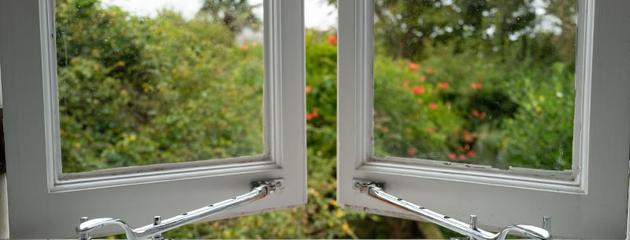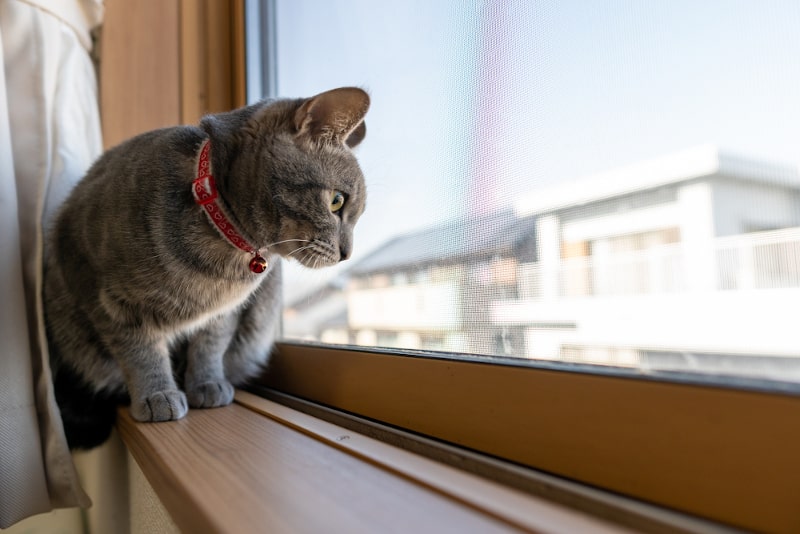The Importance of Window Restrictors

Key Takeaways
- Safety first: Window restrictors help prevent falls, especially in homes with children, seniors, or pets.
- Enhanced security: They reduce the risk of break-ins by limiting the extent to which windows can open.
- Variety of types: Cable, friction, and lockable restrictors suit different window styles and safety needs.
- Regulatory compliance: Canadian codes often require restrictors on upper-storey or low-sill windows.
- Professional installation is recommended, as it ensures correct placement, secure mounting, and compliance with fire safety regulations.
Why Window Safety Matters
Windows are more than just functional — they bring natural light, fresh air, and outdoor views into our homes. But these same openings can also pose serious risks if left unsecured, especially to small children , pets, or vulnerable adults.
Each year in Canada, accidental falls from unsecured windows cause injuries that could have been prevented with simple safety measures. Curious toddlers climbing on furniture or agile pets leaping to window ledges can easily slip through wide openings.
This is where window restrictors come in. Window restrictors are compact devices designed to safely limit the extent to which a window can open, significantly reducing the risk of falls and enhancing home security without compromising ventilation.
Helen Sin, Consumer Success Manager at Canadian Choice Windows & Doors , notes:
“Window restrictors are a crucial safety feature that helps prevent accidental falls. They allow homeowners to maintain ventilation while ensuring windows remain secure, especially in homes with children or pets.”
What Are Window Restrictors?
Window restrictors are safety mechanisms that prevent windows from opening beyond a set distance, usually around 100 mm (4 inches). This distance is small enough to stop a child or pet from slipping through while still allowing airflow.
They are typically made of durable steel or zinc alloys and can be fitted to most window types, including casement, awning, sash, and sliding windows. Many modern designs also feature quick-release mechanisms that enable the whole window to open in emergencies, such as fires.
How Window Restrictors Improve Safety
The primary purpose of window restrictors is to protect people — especially children, older adults, and pets — from accidental falls.
Why They Matter
- Children: Toddlers are naturally curious and can push or lean against window screens, which offer little to no support.
- Seniors: Older adults who experience dizziness, balance issues, or cognitive decline are at risk of accidental falls from windows.
- Pets: Cats, in particular, are agile jumpers who may try to leap from open windows after birds or insects.
| Group at Risk | Main Hazard | How Restrictors Help |
|---|---|---|
| Children | Falling from low-sill windows | Limit opening to under 100 mm |
| Seniors | Losing balance near open windows | Provide a physical barrier |
| Pets | Jumping out in pursuit | Prevent full opening |

How Window Restrictors Improve Home Security
Restrictors don’t just prevent accidents — they also boost home security .
Open windows are a known weak point for burglars, particularly on ground and basement floors. By limiting how far a window can open, restrictors make it far harder for intruders to enter your home, especially when windows are left open for ventilation at night.
| Security Risk | Without Restrictors | With Restrictors |
|---|---|---|
| Forced Entry | Easier to access open windows | Strongly reduced |
| Break-Ins During Summer | High risk when windows are left ajar | Minimized |
| Ventilation at Night | Risky without supervision | Safe with restrictors |
Tony Wong, Project Manager at Canadian Choice Windows & Doors , explains:
“Properly installed window restrictors limit window openings to a safe range, reducing the risk of intrusion or accidents while still ensuring adequate ventilation.”
Types of Window Restrictors
Different window types and safety needs call for different restrictors. Here are the most common options:
| Type | How It Works | Best For | Key Features |
|---|---|---|---|
| Cable Restrictors | Flexible steel cable limits window opening | Casement & sash windows | Lockable, removable |
| Friction Hinges | Built-in resistance slows opening beyond a certain angle | Awning & casement windows | Adjustable tension |
| Lockable Restrictors | Locking the catch block, the window beyond the set point | High-rise buildings, children's bedrooms | Maximum security |
| Sliding Track Restrictors | Stops sash or sliding panels mid-track | Sliding windows & patio doors | Simple installation |
Tip: When choosing a restrictor, verify that it has been tested to meet Canadian safety standards (CSA or equivalent) to ensure durability and reliability.
Installation Tips and Key Considerations
Proper installation is crucial for window restrictors to function effectively and safely.
Before You Install
- Assess risk areas: Install restrictors on any upper-floor or low-sill windows within a child’s reach.
- Match to window style: Select restrictors that are compatible with your specific window type.
- Check building codes: Confirm if your province or municipality has mandatory restrictor requirements.
During Installation
- Use high-quality hardware (screws, anchors) that won’t loosen over time.
- Place restrictors out of reach of children but still accessible for adults.
- Test the restrictor several times to confirm it locks and releases properly.
After Installation
- Inspect restrictors every 6–12 months for damage or loosening.
- Teach older children how to use emergency releases in case of fire.
- Replace worn or corroded restrictors immediately.
Pro Tip: While some homeowners may attempt DIY installation, professional installation is strongly recommended to ensure compliance with Canadian safety codes and long-term reliability.

Are Window Restrictors a Fire Hazard?
When correctly installed, window restrictors do not pose a fire hazard.
Most modern restrictors include a quick-release or emergency override feature that allows the window to open fully in the event of an emergency. This ensures you can maintain both fire safety and fall protection.
Always:
- Follow the manufacturer’s instructions
- Choose restrictors labelled as “egress-compliant”
- Test the emergency release after installation.
Where Are Window Restrictors Required in Canada?
Canadian building codes often require window restrictors in:
- Multi-storey homes and condos
- Daycares and schools
- Rental units with low sill heights (less than 900 mm from the floor)
While specific rules vary by province, a standard guideline is:
-
Any window above the ground floor with a sill height under 900 mm must either
- be fitted with a restrictor, or
- be designed so it cannot open more than 100 mm.
Homeowners, landlords, and property managers should check local municipal building codes or consult certified installers to ensure compliance.
Should You Install Window Restrictors in Your Home?
If your home includes children, pets, or elderly individuals, yes — window restrictors are strongly recommended.
They are cost-effective, unobtrusive, and can be added to existing windows without altering their look. Restrictors give you peace of mind that your windows bring in fresh air without exposing loved ones to unnecessary risks.
Conclusion
Window restrictors are a minor upgrade that delivers huge benefits. They prevent falls, protect pets and children, improve security, and ensure your home meets modern safety standards.
By choosing the correct restrictor and ensuring proper installation, you can enjoy the beauty of open windows without compromising safety or peace of mind.
FAQs
Do window restrictors work on all types of windows?
Yes, though different designs are made for casement, awning, sash, and sliding windows.
Can I retrofit restrictors on older windows?
Usually, yes, though older frames may require reinforcement. Consult an installer.
How far can a window open with a restrictor?
Typically about 100 mm (4 inches) — enough for ventilation but too small for a child to pass through.
Are restrictors removable?
Yes, many models include key or push-button releases to disable them temporarily.
Do restrictors affect ventilation?
No, they allow airflow while maintaining a safe opening distance.
How often should restrictors be checked?
Inspect them every 6–12 months and after any major window maintenance.
1000’s of Colours & Textured Finishes
Transform your home from ordinary to extraordinary with our new coloured and non-glare textured finishes. Available in a wide array of colours as well as custom matched colours for your very own personalized design.
Our Most Popular Replacement Window Colours:









